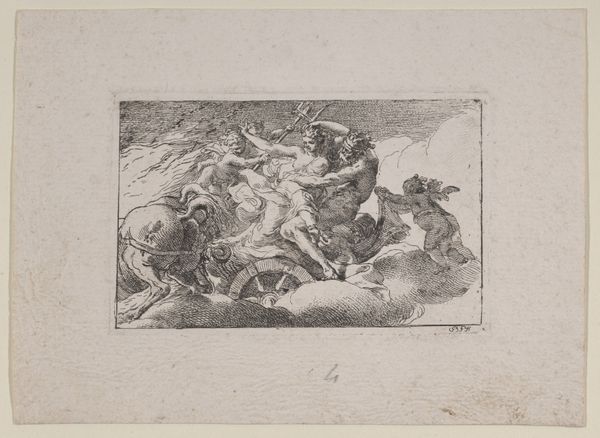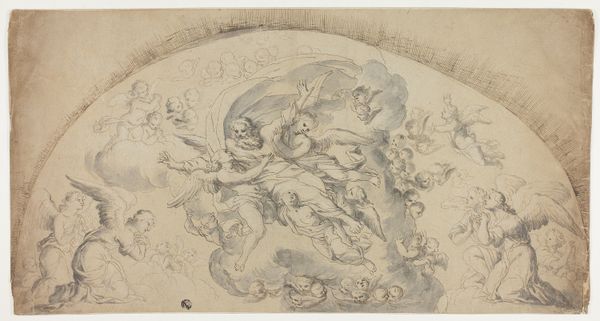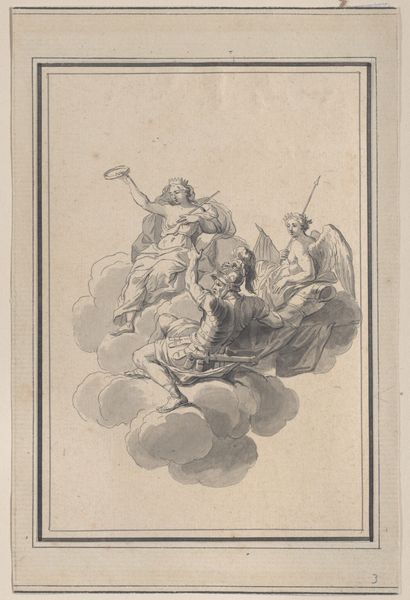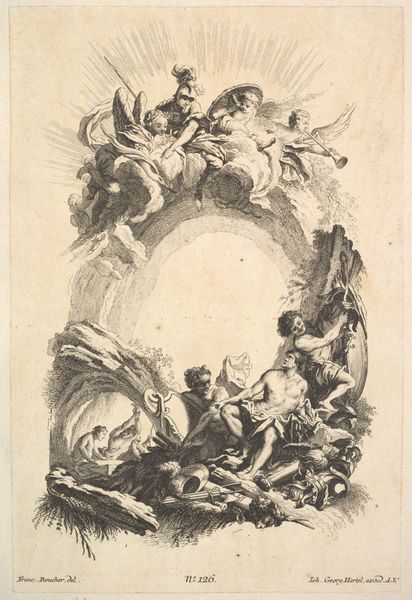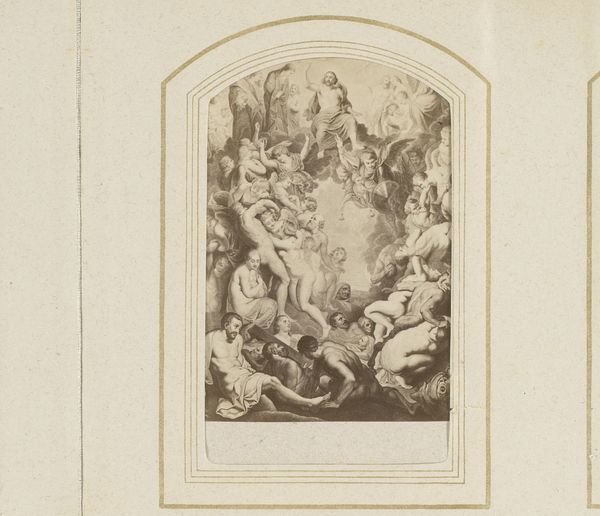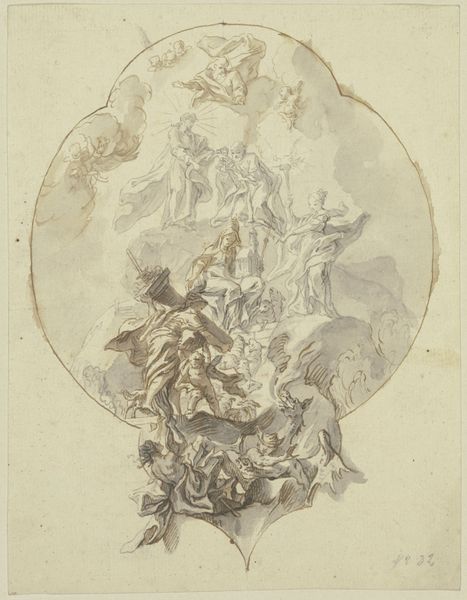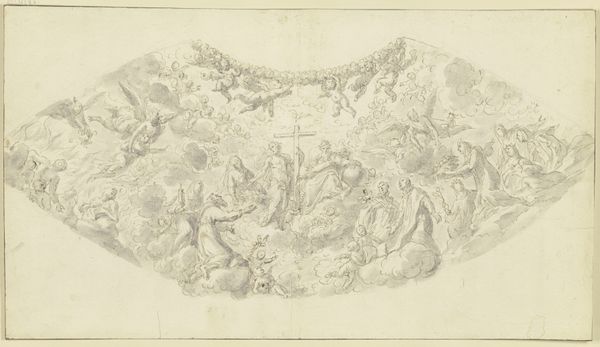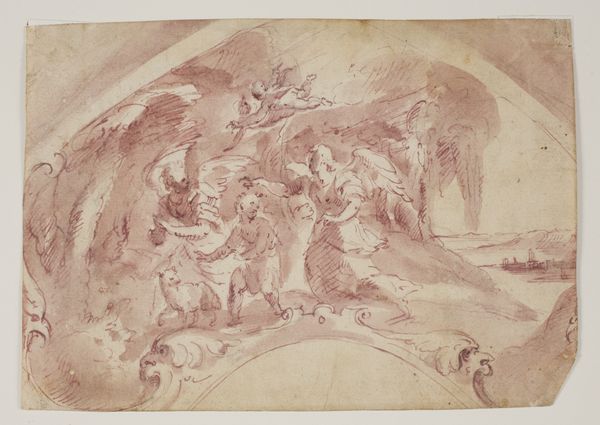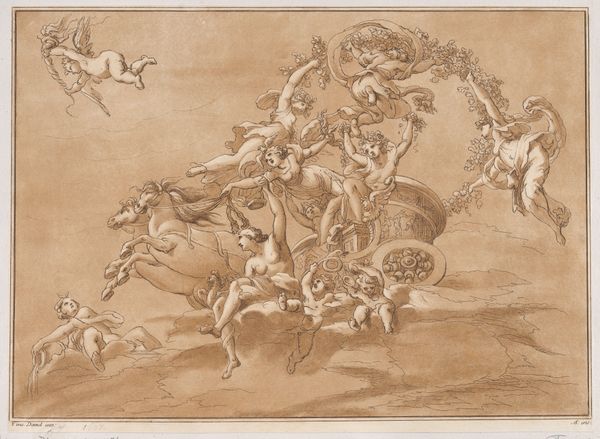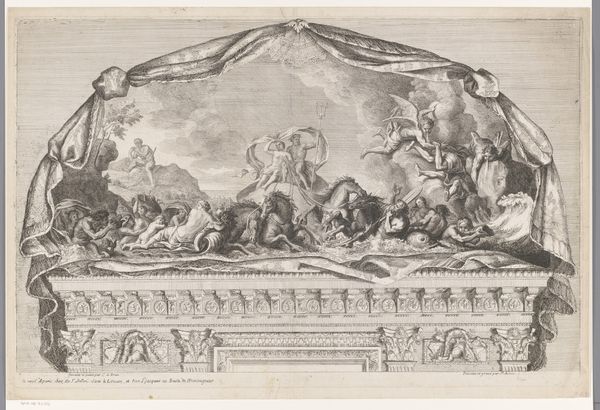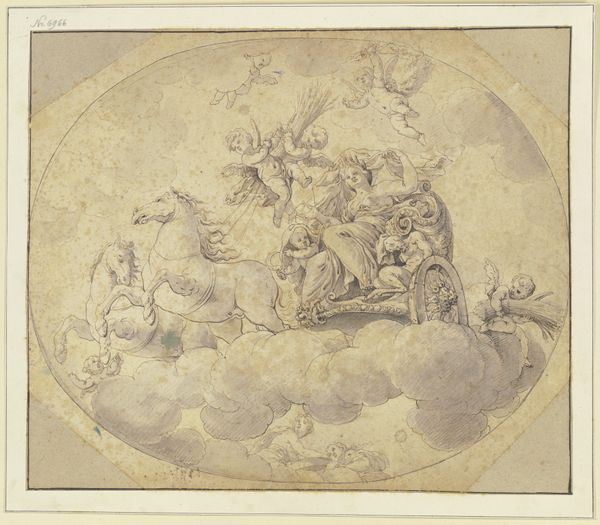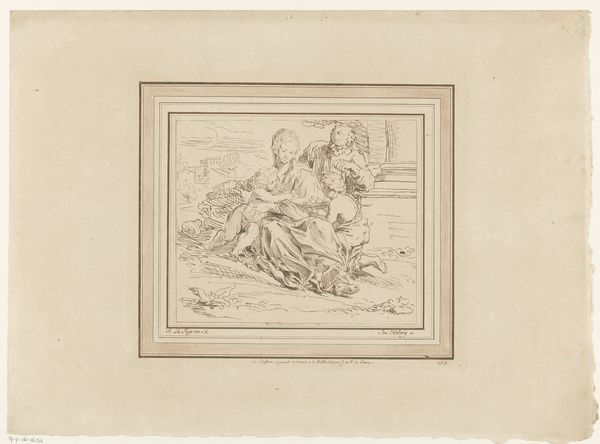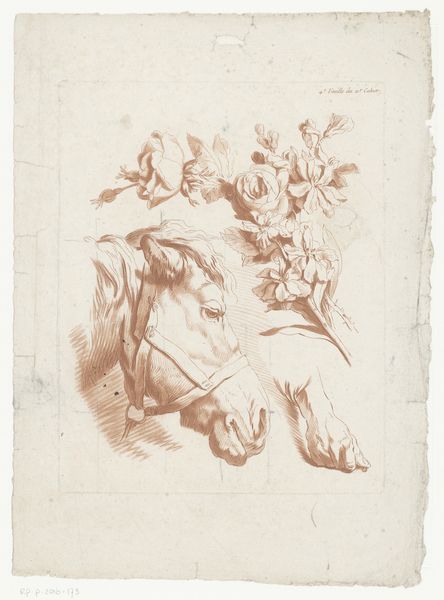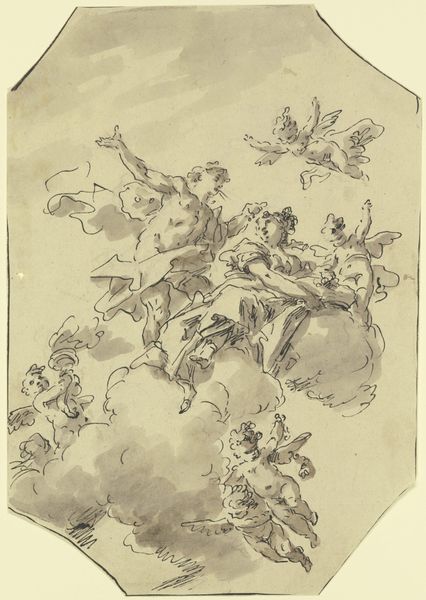
drawing, charcoal
#
drawing
#
baroque
#
charcoal drawing
#
figuration
#
charcoal
#
history-painting
#
charcoal
Dimensions: 10 5/8 x 15 11/16 in. (26.99 x 39.85 cm) (sheet, irregular)10 1/16 x 15 11/16 in. (25.56 x 39.85 cm) (sight, irregular)19 3/4 x 23 3/4 in. (50.17 x 60.33 cm) (sheet)
Copyright: Public Domain
Editor: We’re looking at “Glorification of Saint Matthew,” a charcoal drawing by Martin Knoller from around 1754, housed at the Minneapolis Institute of Art. It feels incredibly dynamic; there's so much movement and emotion captured with just charcoal. How do you interpret this work? Curator: Precisely. Consider first the composition: a whirlwind of figures arranged in a complex, asymmetrical balance. Note how Knoller uses chiaroscuro – the dramatic contrast between light and dark – not just to model the forms, but to guide the viewer’s eye through the ascending vortex. Can you see how the light source, presumably from above, illuminates Saint Matthew while plunging the lower angels into shadow, creating a sense of depth and spatial illusion? Editor: I do. The dramatic lighting definitely amplifies the Baroque style. It's like everything is swirling upwards. Curator: Exactly. Observe also the materiality of charcoal. Knoller exploits its powdery texture to evoke the ethereal quality of the clouds, contrasting this with the sharp, incisive lines that define the figures' musculature. Is it not the inherent tension between line and mass, light and shadow, that communicates the glorification so effectively? Editor: That’s a fascinating point about the materiality itself contributing to the ethereal quality. So, the medium really enhances the message. I never considered charcoal in that way before. Curator: Indeed. The formal elements - composition, light, and medium - create the artwork's meaning. Consider this, the asymmetrical composition heightens the drama, doesn't it? Editor: Absolutely, this has offered me a richer formal understanding. Thank you. Curator: You're welcome. I've learned to look at art differently today too!
Comments
No comments
Be the first to comment and join the conversation on the ultimate creative platform.
